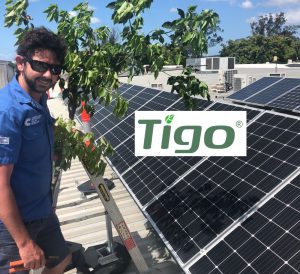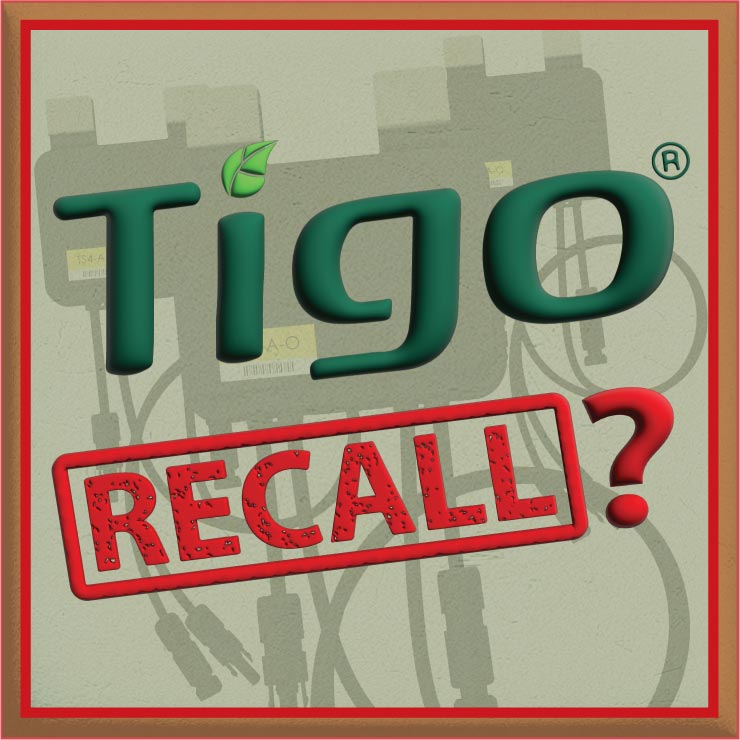Especially if you’re a fellow Californian, I’m very interested to understand what your Tigo Optimizers do for you. The cost over an RSD MLPE is modest enough to make it a no-braineif they actually perform as advertised.I bought a few dozen of the Tigo Optimizers since they weren't that much more than the Tigo Rapid Shutdown units, and in California you're required to have a rapid shutdown system for all roof solar installs.
The test I’d be interested in is to see how they handle one partially-shaded panel in a string of 2 or 3 panels:I did hook up a string of panels with the optimizers installed in a temporary setup, and they seem to do fine, but I don't have any baseline data to compare them to. The nice thing is that the optimizer function doesn't require the Tigo Access Point (TAP) set up to function, and am using it with a Victron MPPT.
If you completely block one cell in a 2-panel string, current and power should plummet until the MPPT drops voltage enough to activate one bypass diode in the shaded panel (~1/6th voltage drop) at which point current should fully recover, but power is only ~83% (5/6ths) of what it was without that shaded cell.
I don’t believe the Tigo optimizer is going to be able to improve upon this since but it would be interesting to measure as a baseline.
Where things get interesting is if that shaded cell is only shaded over 1/4 of its area. In that situation, current should drop to 75% and power along with it. A good MPPt will discover that dropping voltage to activate a bypass diode drops voltage by 1/6th and increases power to 83%.
But with the Tigo optimizer in place, it should be able to increase the current out of the shaded cell from 75% to 100% (without activating a bypass diode) while decreasing voltage out of that panel from Vmp to 3/4Vmp, meaning string voltage should be 1.75Vmp and power should be (75% + 100%)/2 = 87.5%.
I’m pretty sure a +33% buck is the limit of what these Tigo Optimizers can deliver, so as the shade of the1/4 shaded cell is slowly increased, power should drop from 87.5% to 83% where the MPPT drops voltage enough to activate a bypass diode and the optimizer stops bucking.
The other thing that would be worth checking is what the optimizer does in the case of a mostly-shaded panel.
Sn MPPT will need to bypass a shaded panel by activating all 3 bypass diodes, which will drop another ~1.5V of of the Vmp of the unshaded panel (so string voltage will be Vmp - 1.5V rather than Vmp).
If the optimizer is able to internally bypass entire panels with a single diode bypass diode rather than 3, that should mean voltage of Vmp -0.5V rather than Vmp -1.5V without the optimizer.
And if the optimizer uses a switch to bypass panels, that would result in a string voltage of a full Vmp (half the string voltage of the unshaded string).
If Vmp = ~30V, avoiding 1V of diode drop amounts to 3.45% more power and avoiding the full 1.5V drop from 3 bypass diodes amounts to 5.3% more p
Once the weather gets better, I'm going to compare a set of panels with and without optimizers to see if there's much of a difference, and if my Growatt or Sol-Ark systems have any difference on results.
If/when you do that testing, please plan for some shading. If you have the ability to make longer strings, Tigo claims that their optimizers allow a 4S string to be put in parallel with a 3S string, which is another thing you could try.
Unequal string length results in a midpoint Vmppt which is too high for the shorter string (reducing it’s current) and too low for the longer string (decreasing it’s voltage and power along with it).
With Tigo optimizers, buck compensation should allow the panels in the longer string to increase current by up to 33% while decreasing voltage up to 25% and the net result should be both strings operating at ideal Vmppt of the shorter string while the panels of the longer string is internally operating at Vmp even though each optimizer is only being given a voltage of Vmp * (#short/#long) bolts from the MPPT controller.







